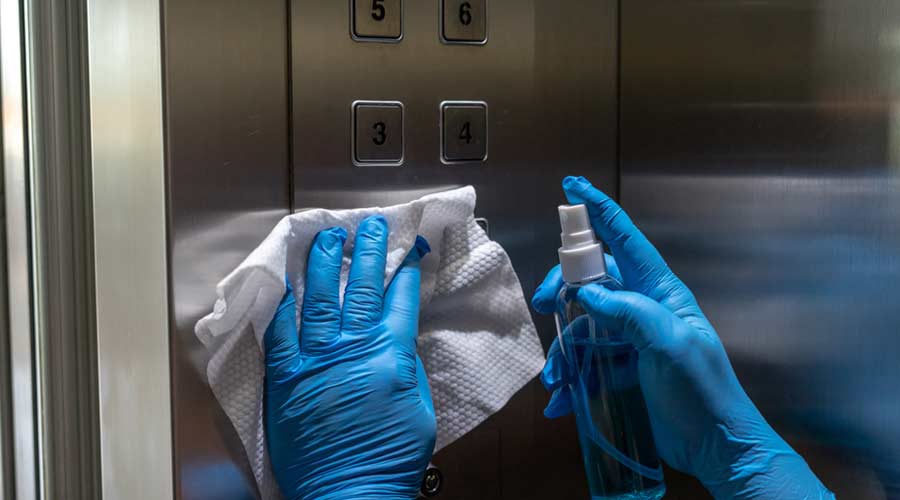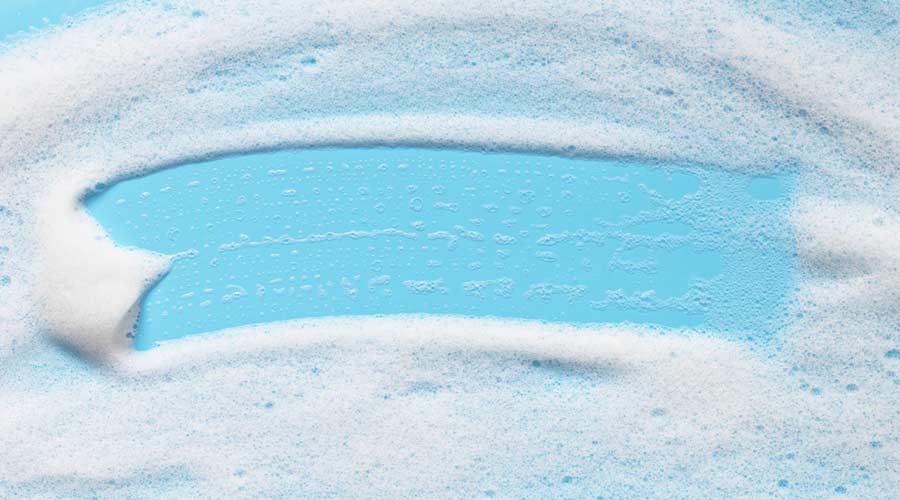
Distributors agree that automatic floor scrubbers are one of the most effective machines for minimizing the dispersal of dust and particulates — provided they are operated and maintained correctly.
“An autoscrubber, working properly, will remove 95 to 98 percent of all particulates and dirt from the floor,” says Kemner. “With that being said, you’re really creating a lot better air quality because foot traffic is not going to kick up dust and debris.”
The most important component of an autoscrubber is the squeegee, which physically removes the soil and contaminants from the floor once they have been agitated and loosened. Distributors should recommend checking the squeegee for damage and wiping it clean daily to ensure that it doesn’t leave soil or excess water on the surface.
Thompson favors autoscrubbers with cylindrical brushes because they pick up debris as they scrub. In contrast, disc scrubbers with pads tend to load up with soil and need to be cleaned daily.
While autoscrubbers do an excellent job of removing the debris that could otherwise become airborne, burnishers introduce a new IAQ challenge: generating dust during the polishing process. To counteract this concern, distributors should recommend customers choose a burnisher with a dust control system.
“I highly recommend a vacuum system on any burnisher to collect the dust generated during burnishing,” says Fritter. “When you run the machine without one, you create particles that get into the air and leave a film of dust on everything.”
When using a dust-control burnisher for daily maintenance, the dust-control bag should be changed at least once per week. Without a dust-control system, operators will need to follow up with dust mopping immediately after burnishing.
Propane-powered burnishers also introduce the potential for harmful emissions; another potential IAQ hazard worth considering. Fortunately, most propane burnishers are equipped with sensors that shut down the machine if there is an issue with the exhaust filter. Nevertheless, machines should be used in well-ventilated areas to prevent the buildup of hazardous gases, such as carbon monoxide.
“People shouldn’t be scared of propane; it’s a very good product. But like anything, you have to maintain it and make sure it meets regulation standards for emissions,” says Kemner. “This is where distributors really need to be a consultant and educate the customer.”
Keeping it Clean
No doubt, floor care is an essential component of any IAQ program; however, its success depends on how well floor machines are maintained. This is an opportunity for distributors to educate customers about the negative impact that dirty tools and neglected equipment have on a facility’s IAQ.
When Kemner follows up with customers who purchased floor equipment, he is often appalled by what he sees — and smells.
“Sometimes you’ll open the recovery tank lid and take three steps back while gagging, because they’ve never cleaned out the recovery tank,” he says. “Or there’s chalky, slimy stuff in the screen for the solution because the line’s never been cleaned out. All of this contributes to poor air quality.”
Distributors agree that more emphasis needs to be placed on the routine cleaning and maintenance of floor equipment. According to Thompson, 70 to 80 percent of customers’ time and money is spent taking care of floors; however, the majority of them are not doing it properly.
“End users are not taking care of the tools,” he says. “People think they don’t need to rinse the tank because it’s just going to get dirty again, but whenever you turn on that autoscrubber, the bacteria that grew in that tank overnight is instantly airborne, and the operator is breathing it in.”
The same holds true for dust mops. Pads need to be removed and cleaned or replaced after every use to avoid redistributing dust and debris.
“Not cleaning dust mops is the kiss of death,” notes Fritter. “If the mop pad is dirty, you’re just pushing around dirt and spreading the dust.”
When it comes to teaching customers how to care for and operate floor equipment, there’s no substitute for in-person training and follow-up visits.
“There’s something to be said for having a person there with the operators to train them, run the machine and answer any questions,” says Kimner. “I’ve gone to a customer multiple times to train someone because they didn’t catch it the first time. I’m happy to do that, because if they’re not happy with me, they’re not going to call me back.”
He recalls a customer who had an autoscrubber shipped to him from another company and didn’t receive any training. When the squeegee stopped working, he took it off and continued to use the machine.
“He caused a worst-case scenario for air quality and probably caused damage to the machine,” Kemner relates. “So don’t just be a sales rep. Be an outside consultant that helps them with their needs.”
Kassandra Kania is a freelance writer based in Charlotte, North Carolina, and is a frequent contributor to Facility Cleaning Decisions.
Why Floor Care Plays a Critical Role in Determining Air Quality

 The Down and Dirty on Cleaning in Virus Season
The Down and Dirty on Cleaning in Virus Season How Surfactant Use is Expanding in Commercial Cleaning
How Surfactant Use is Expanding in Commercial Cleaning